You are using an out of date browser. It may not display this or other websites correctly.
You should upgrade or use an alternative browser.
You should upgrade or use an alternative browser.
Really large aperture lens dascams.
- Thread starter nutsey
- Start date
Dashmellow
Well-Known Member
- Joined
- Sep 22, 2013
- Messages
- 18,280
- Reaction score
- 18,925
- Location
- Uncanny Valley (●_●)
- Country
- United States
- Dash Cam
- Umpteen
I am not aware of any. I believe the depth of field is considered too short to be practical for commercial dash cams.
Some of us have experimented with very fast after market lenses with good success. In some cameras it can almost feel like you have a better sensor at night, but the short depth of field with these fast lenses can make them tricky to focus properly for a dash cam when installing.
Some of us have experimented with very fast after market lenses with good success. In some cameras it can almost feel like you have a better sensor at night, but the short depth of field with these fast lenses can make them tricky to focus properly for a dash cam when installing.
nutsey
Well-Known Member
I believe the DoF is not a problem with such small sensors. Overexposure in bright sun and bad contrast due to some flare effect seem to be an issue here (and the lens price of course  ).
).
Dashmellow
Well-Known Member
- Joined
- Sep 22, 2013
- Messages
- 18,280
- Reaction score
- 18,925
- Location
- Uncanny Valley (●_●)
- Country
- United States
- Dash Cam
- Umpteen
Those of us that experimented with ƒ/1.2 lenses all agreed that the depth of field was very short and we all commented that they could be a challenge to focus. You are correct that they could also be problematic in bright light but this was usually a minor issue because the cameras would compensate fairly well. There was more lens flare and occasionally some color fringing. Much of this was with Mobius cameras and a few early Viofos like the original A119.
Last edited:
Nigel
Well-Known Member
- Joined
- Jul 7, 2014
- Messages
- 16,807
- Reaction score
- 8,777
- Location
- Wales
- Country
- United Kingdom
- Dash Cam
- Gitup F1+G3ꞈꞈꞈꞈꞈ Viofo A229ꞈꞈꞈꞈꞈ Blueskysea B4K
Depends on the size of your sensor, with an IMX322 you can probably use an f1.0 for DIY; with an IMX678 f1.4 is probably the limit.I believe the DoF is not a problem with such small sensors. Overexposure in bright sun and bad contrast due to some flare effect seem to be an issue here (and the lens price of course).
For manufacturing, where they are not going to spend more than a few seconds focusing the lens, those are probably f1.2 and f1.6, although I note that Viofo have decided to use an f1.8 for the new A229 cameras.
We don't use dashcams with small sensors like the IMX322 anymore, although a few are still available such as the Blueskysea B1W. The larger sensors are more sensitive, which makes up for the increase in f number, but with the advantage that you also get improved dynamic range. Dynamic range on the IMX678 is considerably better than on the IMX322, which largely solves the overexposure in bright sun problem, which was a big issue on the IMX322 cameras, but nobody notices on the IMX678 cameras.
Panzer Platform
Well-Known Member
- Joined
- Jun 9, 2022
- Messages
- 2,643
- Reaction score
- 2,601
- Location
- California
- Country
- United States
- Dash Cam
- 2024 Minimum Requirements: STARVIS 2 & HDR
How do I confirm & verify manufacturer claimed specifications for Lens Aperture?I note that Viofo have decided to use an f1.8 for the new A229 cameras.
If I disassemble the camera will it be written on the lens?
I’m now suspicious of all manufacturer claimed specifications.
All specifications should be confirmed & verified.
JardaB
Active Member
- Joined
- Aug 4, 2023
- Messages
- 146
- Reaction score
- 26
- Location
- Tábor
- Country
- Czech Republic
- Dash Cam
- A139 Pro 2CH
That's (a little) hilarious, such suspicion for watching things around you. You'll have to ask at SONY and see what they say  . I would be justified in being so suspicious of goods from Aliexpres
. I would be justified in being so suspicious of goods from Aliexpres 
In general there are some technical limits on sensors and lenses, few products have apertures of 1.8 or less (like Sony RX100 III, ZEISS® Vario Sonnar ) - especially for miniaturized devices.
But seriously, some vigilance in life is needed
In general there are some technical limits on sensors and lenses, few products have apertures of 1.8 or less (like Sony RX100 III, ZEISS® Vario Sonnar ) - especially for miniaturized devices.
But seriously, some vigilance in life is needed
Nigel
Well-Known Member
- Joined
- Jul 7, 2014
- Messages
- 16,807
- Reaction score
- 8,777
- Location
- Wales
- Country
- United Kingdom
- Dash Cam
- Gitup F1+G3ꞈꞈꞈꞈꞈ Viofo A229ꞈꞈꞈꞈꞈ Blueskysea B4K
I think you would need to remove the lens from the camera and measure the optics, but on a dashcam size lens that is going to be very difficult to get accurate.How do I confirm & verify manufacturer claimed specifications for Lens Aperture?
If I disassemble the camera will it be written on the lens?
I’m now suspicious of all manufacturer claimed specifications.
All specifications should be confirmed & verified.
The specification is probably correct anyway, since the dashcam manufacturer will simply quote the lens manufacturer specification, and that should be correct. Unlike the FoV, there is no reason why it would be "wrong", other than a cut and paste malfunction.
It is simply:
f number = focal length / entrance pupil diameter
both of which can be measured, and will be the same whatever sensor the lens is fitted to and however it is mounted, and the figure can be directly compared between cameras, with no complications.
So don't worry about it.
I'm sure some of the specifications will be wrong though, especially in cameras that have had their lenses changed since their specification was published. Such as the A119 Mini 2?
Panzer Platform
Well-Known Member
- Joined
- Jun 9, 2022
- Messages
- 2,643
- Reaction score
- 2,601
- Location
- California
- Country
- United States
- Dash Cam
- 2024 Minimum Requirements: STARVIS 2 & HDR
The production / retail A119 Mini 2 (May 2023) had an F1.6 specification.I'm sure some of the specifications will be wrong though, especially in cameras that have had their lenses changed since their specification was published. Such as the A119 Mini 2?
After RCG530 discovered the lens defocus issue when operating in parking mode under direct sunlight, Viofo replaced the lens, and started shipping Mini 2’s sold after July 2023 with the lens from the A129 Plus.
All three cameras have the same Lens Aperture & FOV specification;
F1.6 140° = A129 Plus
F1.6 140° = A119 Mini 2 (May 2023)
F1.6 140° = A119 Mini 2 (July 2023 updated lens)
Actual measured Horizontal FOV;
99° FOV = A119 Mini 2 (May 2023)
114° FOV = A119 Mini 2 (July 2023)
114° FOV = A129 Plus
Absolutely not.So don't worry about it.
“Trust but verify”
-Ronald Reagan
Attachments
-
 4 .jpg279.4 KB · Views: 8
4 .jpg279.4 KB · Views: 8 -
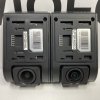 Original (left) Upgraded (right) 1 .jpg526 KB · Views: 7
Original (left) Upgraded (right) 1 .jpg526 KB · Views: 7 -
 Original (left) Upgraded (right) 4 .jpg430 KB · Views: 5
Original (left) Upgraded (right) 4 .jpg430 KB · Views: 5 -
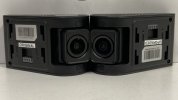 Original (left) Upgraded (right) 3 .jpg230.8 KB · Views: 10
Original (left) Upgraded (right) 3 .jpg230.8 KB · Views: 10 -
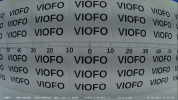 A119 Mini 2 Original Lens .png1.2 MB · Views: 10
A119 Mini 2 Original Lens .png1.2 MB · Views: 10 -
 A119 Mini 2 Upgraded Lens .png1.3 MB · Views: 9
A119 Mini 2 Upgraded Lens .png1.3 MB · Views: 9 -
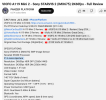 1 .png128.7 KB · Views: 9
1 .png128.7 KB · Views: 9 -
 2 .png242.1 KB · Views: 7
2 .png242.1 KB · Views: 7 -
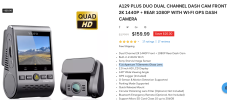 3 .png328.5 KB · Views: 9
3 .png328.5 KB · Views: 9 -
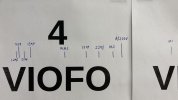 5 Left Side .jpg278.5 KB · Views: 7
5 Left Side .jpg278.5 KB · Views: 7
Dashmellow
Well-Known Member
- Joined
- Sep 22, 2013
- Messages
- 18,280
- Reaction score
- 18,925
- Location
- Uncanny Valley (●_●)
- Country
- United States
- Dash Cam
- Umpteen
How do I confirm & verify manufacturer claimed specifications for Lens Aperture?
If I disassemble the camera will it be written on the lens?
I’m now suspicious of all manufacturer claimed specifications.
All specifications should be confirmed & verified.
It's always amusing how you present yourself as a "dash cam expert" in order to garner attention and receive thousands of dollars worth of free merchandise when you know so little about how cameras, lenses and photography actually work.
Your paranoia and suspicion about alleged false manufacturers specifications are rooted in your ignorance about optics.
Lens specifications from the manufacturers, even for the less expensive ones are really quite accurate even if the quality varies. As Nigel points out, it is mathematical. You can't fake lens aperture claims if you are a lens manufacturer, although I guess someone selling on eBay or Amazon could claim anything they want, but that's not what we're talking about here. And Viofo certainly can be trusted to provide accurate lens aperture specifications.
The fact is that anyone who is knowledgeable and experienced about optics can pretty much tell rather quickly if claimed specifications such as aperture are accurate, along with a wide range of other optical quality parameters just by carefully examining the images produced by the lens under different conditions. For example, images from a ƒ/1.2 lens and a ƒ/1.6 lens or a ƒ/2.0 lens will appear different and would be obvious to anyone who knows what they are looking at, regardless of what sensor is used. The difference in light transmission between a ƒ/1.2 lens and a ƒ/1.6 lens and an ƒ/2.0 lens is dramatic.
The one piece of marketing BS we do get from dash camera manufacturers regarding lenses, including Viofo that really irks me are the bogus claims about the number of lens elements. It is based on the "more is better" marketing falsehood.
Viofo, Street Guardian and others often claim that their lenses have "7 elements". The fact is that these lenses really have only 6 individual lens elements but the IR-cut filter is included as an additional "lens element" to increase the apparent number to 7. This is the "more is better" bogus marketing scheme intended to influence most people who have no knowledge of lens optics.
I recall that Jokiin from Street Guardian started this trend as a marketing ploy and others ran with it.
This image is from the Street Guardian (OCDtonic) web site to illustrate my point. It applies to all their lenses. Viofo does the same in their promotions.
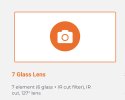

The number of lens elements in a lens has literally nothing to do with the quality of images a lens can render. Some of the finest, sharpest lenses ever made have only four elements. For example, the superb, incredibly sharp 50mm Leitz Elmar ƒ/3.5 lens that shipped with the original Leica 35mm camera and was available for nearly 40 years had only 4 lens elements. Today's computer designed, multicoated lenses are more sophisticated and generally do have more elements but more is not necessarily better and in some circumstances can even be worse due to decreased light transmission from all that glass, but in any event a lens filter is not a lens "element".
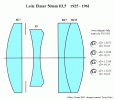
Nigel
Well-Known Member
- Joined
- Jul 7, 2014
- Messages
- 16,807
- Reaction score
- 8,777
- Location
- Wales
- Country
- United Kingdom
- Dash Cam
- Gitup F1+G3ꞈꞈꞈꞈꞈ Viofo A229ꞈꞈꞈꞈꞈ Blueskysea B4K
F1.6 140° = A119 Mini 2 (May 2023)
F1.6 140° = A119 Mini 2 (July 2023 updated lens)
I think you may find a fault when you verify the first quote, Reagan was correct, although it is actually a Russian rhyming proverb that Reagan learned and put to good use.“Trust but verify”
-Ronald Reagan
The good thing about aperture figures is that they are not affected by actual image FoV, they are already corrected for lens FoV.99° FOV = A119 Mini 2 (May 2023)
114° FOV = A119 Mini 2 (July 2023)
So I expect that all A119 Mini 2 have the same aperture, the same sensor, and thus the same brightness of image on the sensor, whichever lens they use, thus you can use the same firmware on all versions and the exposure will be correct.
Dashmellow
Well-Known Member
- Joined
- Sep 22, 2013
- Messages
- 18,280
- Reaction score
- 18,925
- Location
- Uncanny Valley (●_●)
- Country
- United States
- Dash Cam
- Umpteen
So I expect that all A119 Mini 2 have the same aperture, the same sensor, and thus the same brightness of image on the sensor, whichever lens they use, thus you can use the same firmware on all versions and the exposure will be correct.
I suspect you are correct here. I believe they simply replaced a flawed lens with an almost identical one with better quality and dimensional stability.
Nigel
Well-Known Member
- Joined
- Jul 7, 2014
- Messages
- 16,807
- Reaction score
- 8,777
- Location
- Wales
- Country
- United Kingdom
- Dash Cam
- Gitup F1+G3ꞈꞈꞈꞈꞈ Viofo A229ꞈꞈꞈꞈꞈ Blueskysea B4K
Not sure about better, I think they wanted a lens closer in FoV to the A119 V3 since it is an A119, but ended up with A129 FoV.I suspect you are correct here. I believe they simply replaced a flawed lens with an almost identical one with better quality and dimensional stability.
Personally I would choose the wider lens, but people in places with smaller writing on their licence plates than the UK may well think the narrower FoV is better, the V3 has been very popular.
Don't know what happened on the temperature stability, but I guess that production lenses didn't match test lenses, and when problems emerged they switched to the well proven and trusted A129 lens instead of trying to sort the quality control issues on the narrower one.
Dashmellow
Well-Known Member
- Joined
- Sep 22, 2013
- Messages
- 18,280
- Reaction score
- 18,925
- Location
- Uncanny Valley (●_●)
- Country
- United States
- Dash Cam
- Umpteen
Not sure about better, I think they wanted a lens closer in FoV to the A119 V3 since it is an A119, but ended up with A129 FoV.
Personally I would choose the wider lens, but people in places with smaller writing on their licence plates than the UK may well think the narrower FoV is better, the V3 has been very popular.
Don't know what happened on the temperature stability, but I guess that production lenses didn't match test lenses, and when problems emerged they switched to the well proven and trusted A129 lens instead of trying to sort the quality control issues on the narrower one.
By "better" I meant the improved dimensional stability with temperate fluctuations.
Personally I consider the A119 V3 and Mini 2's narrower lens to be one of its more appealing features. At least for me the lens suits my needs very well for my vehicle as I use the cameras for both front and rear along with side cameras that overlap the front and rear coverage.
- Joined
- Sep 29, 2015
- Messages
- 1,457
- Reaction score
- 3,358
- Location
- Shenzhen
- Country
- China
- Dash Cam
- A129 Pro / A129 Duo / A119 V3 / A119S / G1W-S / WR1/
As I know, SG doesn't has a dashcam uses a 7G lens.It's always amusing how you present yourself as a "dash cam expert" in order to garner attention and receive thousands of dollars worth of free merchandise when you know so little about how cameras, lenses and photography actually work.
Your paranoia and suspicion about alleged false manufacturers specifications are rooted in your ignorance about optics.
Lens specifications from the manufacturers, even for the less expensive ones are really quite accurate even if the quality varies. As Nigel points out, it is mathematical. You can't fake lens aperture claims if you are a lens manufacturer, although I guess someone selling on eBay or Amazon could claim anything they want, but that's not what we're talking about here. And Viofo certainly can be trusted to provide accurate lens aperture specifications.
The fact is that anyone who is knowledgeable and experienced about optics can pretty much tell rather quickly if claimed specifications such as aperture are accurate, along with a wide range of other optical quality parameters just by carefully examining the images produced by the lens under different conditions. For example, images from a ƒ/1.2 lens and a ƒ/1.6 lens or a ƒ/2.0 lens will appear different and would be obvious to anyone who knows what they are looking at, regardless of what sensor is used. The difference in light transmission between a ƒ/1.2 lens and a ƒ/1.6 lens and an ƒ/2.0 lens is dramatic.
The one piece of marketing BS we do get from dash camera manufacturers regarding lenses, including Viofo that really irks me are the bogus claims about the number of lens elements. It is based on the "more is better" marketing falsehood.
Viofo, Street Guardian and others often claim that their lenses have "7 elements". The fact is that these lenses really have only 6 individual lens elements but the IR-cut filter is included as an additional "lens element" to increase the apparent number to 7. This is the "more is better" bogus marketing scheme intended to influence most people who have no knowledge of lens optics.
I recall that Jokiin from Street Guardian started this trend as a marketing ploy and others ran with it.
This image is from the Street Guardian (OCDtonic) web site to illustrate my point. It applies to all their lenses. Viofo does the same in their promotions.
View attachment 70422
View attachment 70420
The number of lens elements in a lens has literally nothing to do with the quality of images a lens can render. Some of the finest, sharpest lenses ever made have only four elements. For example, the superb, incredibly sharp 50mm Leitz Elmar ƒ/3.5 lens that shipped with the original Leica 35mm camera and was available for nearly 40 years had only 4 lens elements. Today's computer designed, multicoated lenses are more sophisticated and generally do have more elements but more is not necessarily better and in some circumstances can even be worse due to decreased light transmission from all that glass, but in any event a lens filter is not a lens "element".
View attachment 70421
In all of the lens spec documents, the IR cut is listed separately.
While we listed it is a 7G lens, it is a true 7G, like we used on A129 Plus.
The A129 Plus lens is not cheap, as I know, almost no other dashcam company use this lens as it is too expensive. And the 2K quality difference is not obvious in some condition.

This is the A119 V3 lens structure.

For other cheap lenses, it will not declare it uses all glasses, like this.

Dashmellow
Well-Known Member
- Joined
- Sep 22, 2013
- Messages
- 18,280
- Reaction score
- 18,925
- Location
- Uncanny Valley (●_●)
- Country
- United States
- Dash Cam
- Umpteen
As I know, SG doesn't has a dashcam uses a 7G lens.
In all of the lens spec documents, the IR cut is listed separately.
While we listed it is a 7G lens, it is a true 7G, like we used on A129 Plus.
The A129 Plus lens is not cheap, as I know, almost no other dashcam company use this lens as it is too expensive. And the 2K quality difference is not obvious in some condition.
View attachment 70444
This is the A119 V3 lens structure.
View attachment 70445
For other cheap lenses, it will not declare it uses all glasses, like this.
View attachment 70446
As I know, SG doesn't has a dashcam uses a 7G lens.
In all of the lens spec documents, the IR cut is listed separately.
While we listed it is a 7G lens, it is a true 7G, like we used on A129 Plus.
The A129 Plus lens is not cheap, as I know, almost no other dashcam company use this lens as it is too expensive. And the 2K quality difference is not obvious in some condition.
View attachment 70444
This is the A119 V3 lens structure.
View attachment 70445
For other cheap lenses, it will not declare it uses all glasses, like this.
View attachment 70446
As I know, SG doesn't has a dashcam uses a 7G lens.
In all of the lens spec documents, the IR cut is listed separately.
While we listed it is a 7G lens, it is a true 7G, like we used on A129 Plus.
The A129 Plus lens is not cheap, as I know, almost no other dashcam company use this lens as it is too expensive. And the 2K quality difference is not obvious in some condition.
View attachment 70444
This is the A119 V3 lens structure.
View attachment 70445
For other cheap lenses, it will not declare it uses all glasses, like this.
View attachment 70446
Really pleased to hear this !
It doesn't actually surprise me because you usually have a reputation for being very forthcoming about the specifications of your products. I based my opinion on what Street Guardian (and other manufacturers) have been doing based in what they state on their web site so I apologize for the misinformation.
ogzogz
Active Member
As I know, SG doesn't has a dashcam uses a 7G lens.
In all of the lens spec documents, the IR cut is listed separately.
While we listed it is a 7G lens, it is a true 7G, like we used on A129 Plus.
The A129 Plus lens is not cheap, as I know, almost no other dashcam company use this lens as it is too expensive. And the 2K quality difference is not obvious in some condition.
View attachment 70444
This is the A119 V3 lens structure.
View attachment 70445
For other cheap lenses, it will not declare it uses all glasses, like this.
View attachment 70446
I compared the two images.
Can improvements be made for a129 pro?
Could this have something to do with the IR cut filter?
a119 mini 2 purple image fixed in latest firmware. Can the same improvement be made for a129 pro?
Nigel
Well-Known Member
- Joined
- Jul 7, 2014
- Messages
- 16,807
- Reaction score
- 8,777
- Location
- Wales
- Country
- United Kingdom
- Dash Cam
- Gitup F1+G3ꞈꞈꞈꞈꞈ Viofo A229ꞈꞈꞈꞈꞈ Blueskysea B4K
It is worth pointing out that it is not just the FoV that is important when comparing these lenses. The V3 lens has quite low fisheye compared to the wider lenses, so although the wider lenses have a wider FoV, the amount of magnification for reading the plate directly in front of you can be almost the same, giving you the best of both, but with some people complaining that they don't like fisheye!Personally I consider the A119 V3 and Mini 2's narrower lens to be one of its more appealing features. At least for me the lens suits my needs very well for my vehicle as I use the cameras for both front and rear along with side cameras that overlap the front and rear coverage.
I don't have a fisheye figure for the A129 Plus lens, so I'm not sure how the two Mini 2 lenses compare, but the original Mini 2 lens appears to have the flattest (least fisheye) of any lens other than the A129 Pro (a lens with low fisheye for making 4K road movies).
It would be good if @Panzer Platform gave us the actual fisheye as well as the actual horizontal FoV figures... the information is on your test rig images if you don't mind a little mathematics, or using a spreadsheet! Dashcam manufacturers never give fisheye in specifications, there would be even more problems than with FoV!
Dashmellow
Well-Known Member
- Joined
- Sep 22, 2013
- Messages
- 18,280
- Reaction score
- 18,925
- Location
- Uncanny Valley (●_●)
- Country
- United States
- Dash Cam
- Umpteen
It is worth pointing out that it is not just the FoV that is important when comparing these lenses. The V3 lens has quite low fisheye compared to the wider lenses, so although the wider lenses have a wider FoV, the amount of magnification for reading the plate directly in front of you can be almost the same, giving you the best of both, but with some people complaining that they don't like fisheye!
I don't have a fisheye figure for the A129 Plus lens, so I'm not sure how the two Mini 2 lenses compare, but the original Mini 2 lens appears to have the flattest (least fisheye) of any lens other than the A129 Pro (a lens with low fisheye for making 4K road movies).
It would be good if @Panzer Platform gave us the actual fisheye as well as the actual horizontal FoV figures... the information is on your test rig images if you don't mind a little mathematics, or using a spreadsheet! Dashcam manufacturers never give fisheye in specifications, there would be even more problems than with FoV!
It's true. Barrel distortion is quite well corrected on the V3 even though the lens is still indeed a wide angle. You may recall I also use a custom telephoto camera, so I tend to capture plate numbers and other details extremely well. Best of both worlds.
I actually don't think a bit of barrel distortion fisheye on a dash cam with a fairly wide lens is such a bad thing for those that want a large AOV. This is dash cam documentation after all, not cinematography.
Last edited:
Dashmellow
Well-Known Member
- Joined
- Sep 22, 2013
- Messages
- 18,280
- Reaction score
- 18,925
- Location
- Uncanny Valley (●_●)
- Country
- United States
- Dash Cam
- Umpteen
It would be good if @Panzer Platform gave us the actual fisheye as well as the actual horizontal FoV figures... the information is on your test rig images if you don't mind a little mathematics, or using a spreadsheet! Dashcam manufacturers never give fisheye in specifications, there would be even more problems than with FoV!
Panzer Platform will mind a little mathematics! He freaked out and started insulting me, claiming I "mastered the art of overcomplicating things" when I suggested he use a simple high school level trigonometry equation to calculate AOV (Angle of View) based on the focal length of the lens and the sensor width. He considers mathematics to be "Pig Latin Hieroglyphics with a Scottish accent" (crazy maths). Plus he objects to the use of the more precise term AOV vs the technically incorrect term FOV because he also believes this to be too much for the "average consumer" to get their mind around. Fisheye calculation surely will be a bridge too far.
You just need a bit of trigonometry, that's all.
Angle of view (in degrees) = 2 ArcTan( sensor width / (2 X focal length)) * (180/π)
This is the formula that is most commonly cited for angle of view, and it agrees with the way in which lens specifications are presented by major camera manufacturers. (Although not necessarily dash cam manufacturers who tend to often just make stuff up.)
FOV would add a distance component:
Field of view = 2 (Tan (Angle of view/2) X Distance to Subject)
I gotta hand to you Mellow, you have mastered the art of overcomplicating things.
You might as well be speaking Pig Latin Hieroglyphics with a Scottish accent.
You’re really making me feel inadequate with your crazy maths.
The real value would be coming up with an explanation that could be understood by the average consumer with a bellow average IQ, (me). lol
Last edited:
